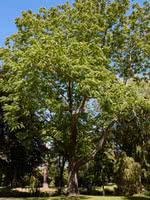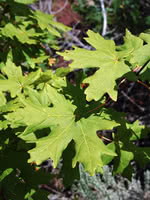Mon-Fri 9am - 5pm Mountain time
Black Walnut vs Big Tooth Maple
Juglans nigra
Acer grandidentatum
NOT AVAILABLE THIS SEASON - MIGHT RETURN
NOT AVAILABLE THIS SEASON - MIGHT RETURN
The Black Walnut is a slow growing, large, straight-stemmed tree with an open crown. It produces dense, very hard, edible nuts.
Black Walnut has a deeply-furrowed, black bark. Its leaves are about 1 foot long, composed of 15 - 23 slightly stalked leaflets on a moderately stout stock which provide good dappled shade.
Despite being highly valued for its edible nuts and its shade tree aesthetics, it is rare to see this tree on the prairies.
Note: Black Walnut's roots produce a substance named juglone that is toxic to some other plants. Consider this when choosing where you plant a black walnut, as you will not be able to grow tomato, potato, cabbage, eggplant, blueberry, azalea, rhododendron, lilac, red pine and apple in the surrounding area.
Note: Plant this tree once. It will not respond well to transplanting.
Note: Although self-pollinating, planting two trees significantly improves nut production.
A top CO2 absorbing species. Experts think this tree may help climate change more than others.
Big Tooth Maple is a versatile, cold hardy maple variety that is ideal for small landscapes. It has high ornamental appeal due to its striking red-gold autumn foliage and multi-stemmed form.
Big Tooth Maple is highly deer resistant and drought tolerant as well. Keep in mind the size and form of this tree can vary due to climate, moisture, and growing conditions. In drier spots, you'll notice Big Tooth Maple is more shrub like. In moist, full sun conditions, this tree can grow to be up to 50 ft tall. Plan your site accordingly.

